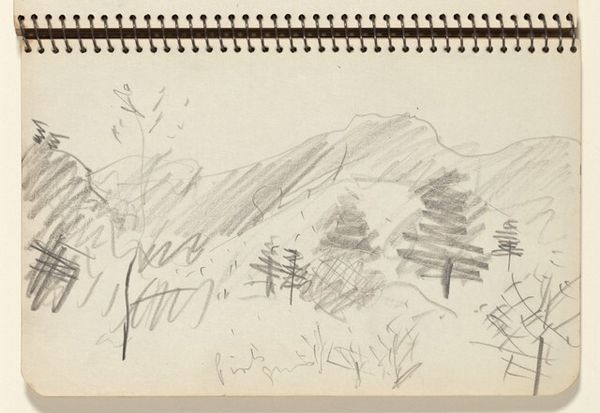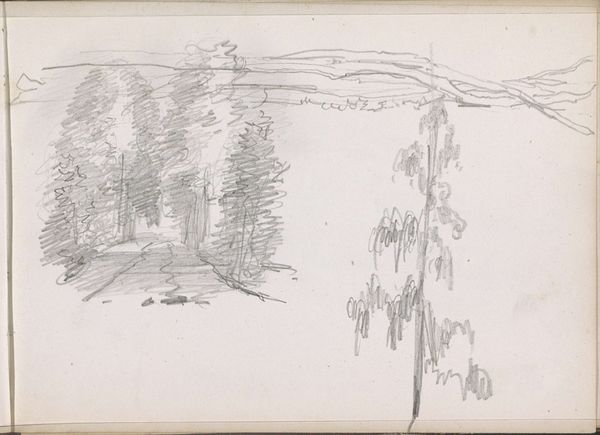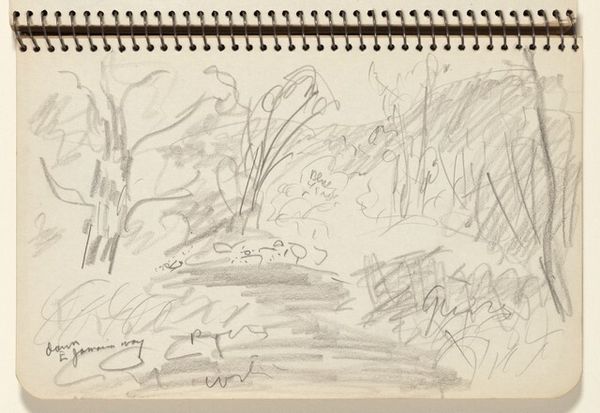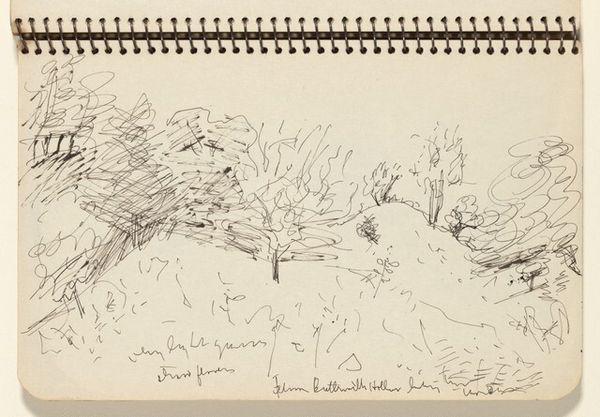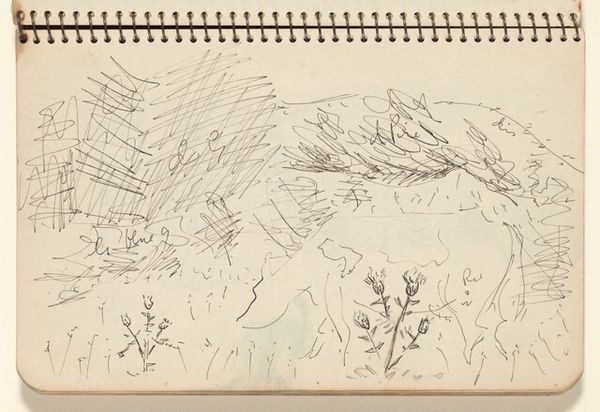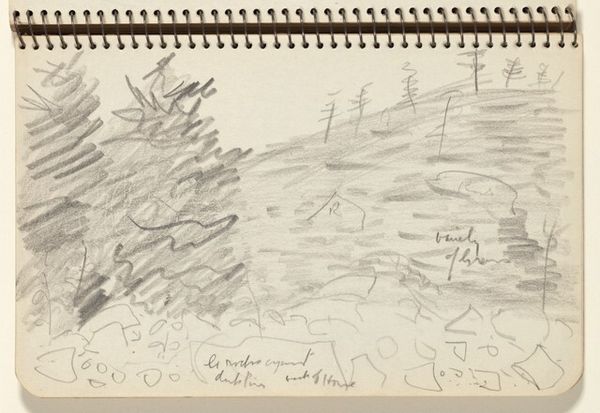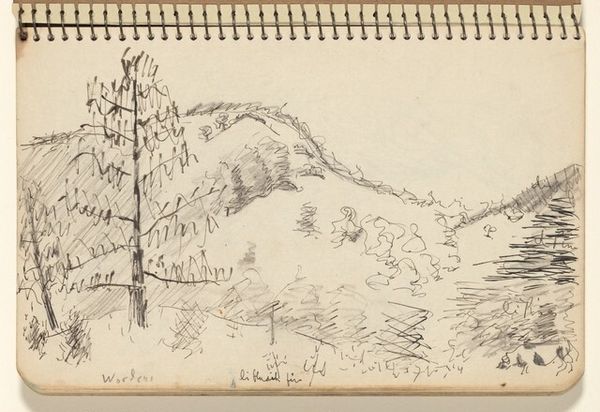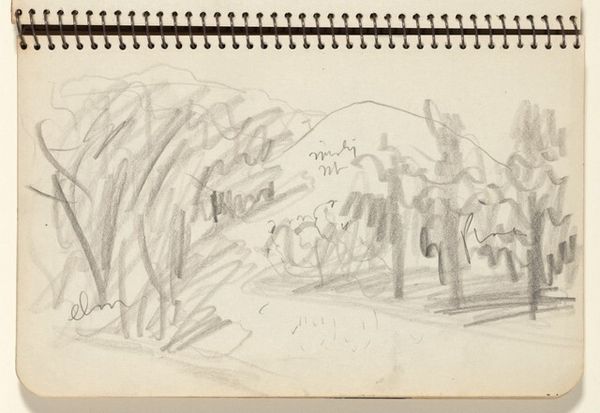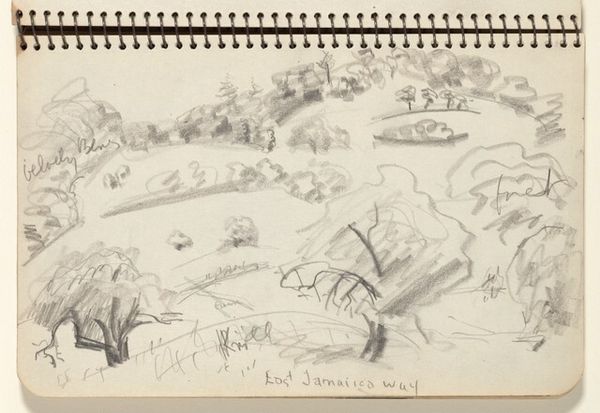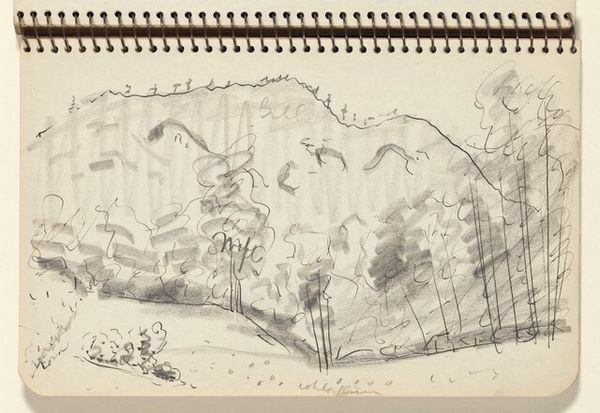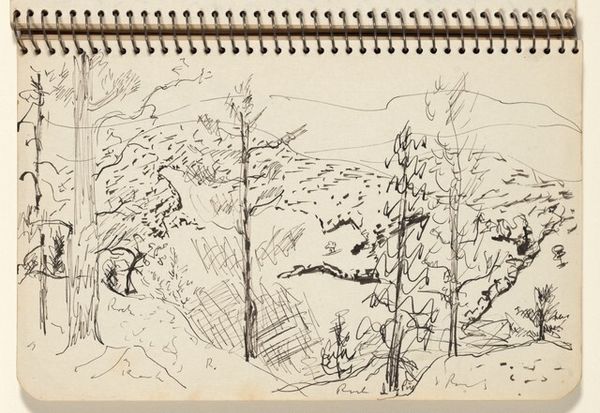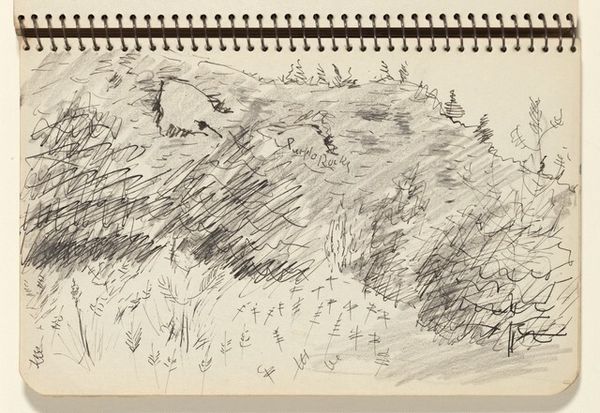
drawing, pencil
#
drawing
#
landscape
#
pencil
#
abstraction
Dimensions: overall: 12.8 x 20 cm (5 1/16 x 7 7/8 in.)
Copyright: National Gallery of Art: CC0 1.0
Editor: This is Milton Avery’s "Wooded Landscape," a pencil drawing from 1943. It feels almost like a fleeting memory of a forest, quickly sketched. What stands out to you in this seemingly simple drawing? Curator: It's precisely the apparent simplicity that interests me. Avery was working during a time of intense global conflict. How might the desire to represent such a seemingly tranquil scene resonate with the anxieties and yearnings of a wartime audience? This idealized depiction could be read as a form of escapism, a longing for a simpler, pre-war world, or perhaps a vision of hope for the future. Editor: That’s fascinating. I was just thinking about the personal connection Avery might have felt with the location when creating it. But placing it in a wider historical context… it really does open it up. The loose sketch-like quality of the drawing also creates this tension between capturing a specific place and the idea of "landscape" itself, doesn’t it? Curator: Exactly! The gestural marks, the abbreviation of forms... this aesthetic can be seen as a reaction to academic art traditions. Consider how institutions historically valorized highly detailed and polished landscapes. By presenting a sketch, Avery subtly challenges those conventions and invites us to contemplate the very act of seeing and representing nature. How does that shift in artistic authority affect the viewing public? Does it invite participation, perhaps encouraging others to sketch and record their impressions? Editor: It definitely feels more accessible, less intimidating than a grand, finished painting. I almost feel invited to pick up a pencil myself! So, Avery is not just showing us a landscape, he is commenting on the cultural values that surround art. Curator: Precisely! And remember, artistic choices are never made in a vacuum. "Wooded Landscape" can give us clues about the society, politics and people’s lives at the time it was made, and in that way the role and position of the artwork itself. Editor: Wow. I’ll never look at a simple landscape the same way again. Thanks for opening my eyes!
Comments
No comments
Be the first to comment and join the conversation on the ultimate creative platform.

